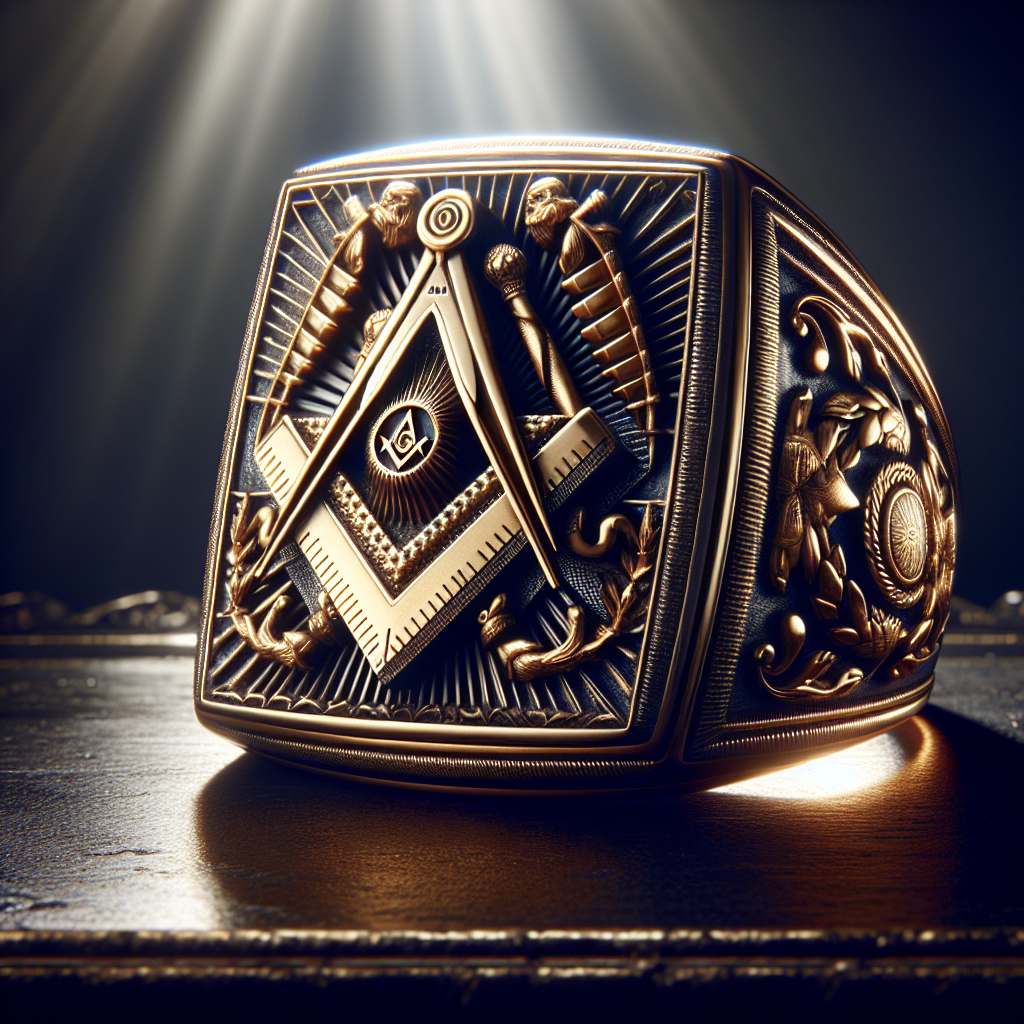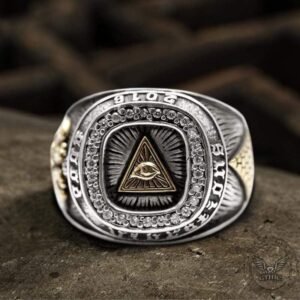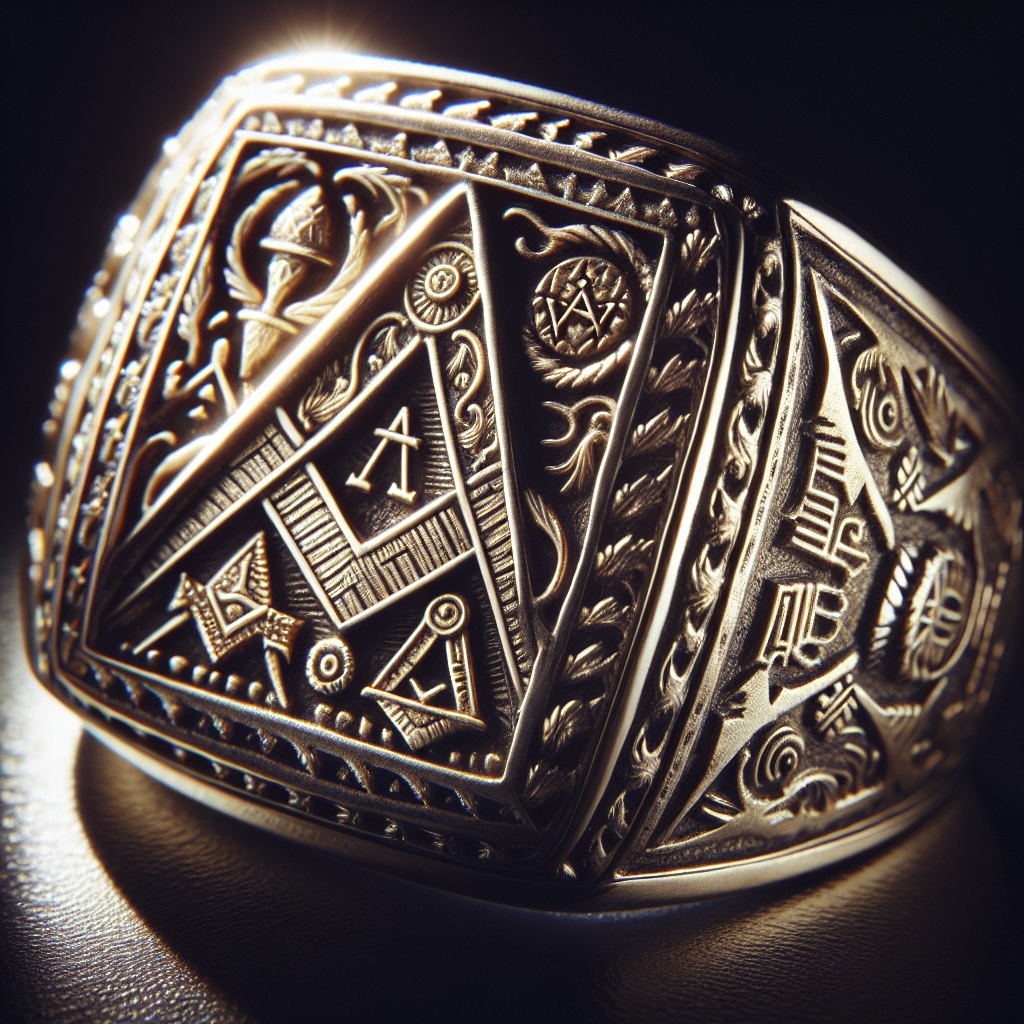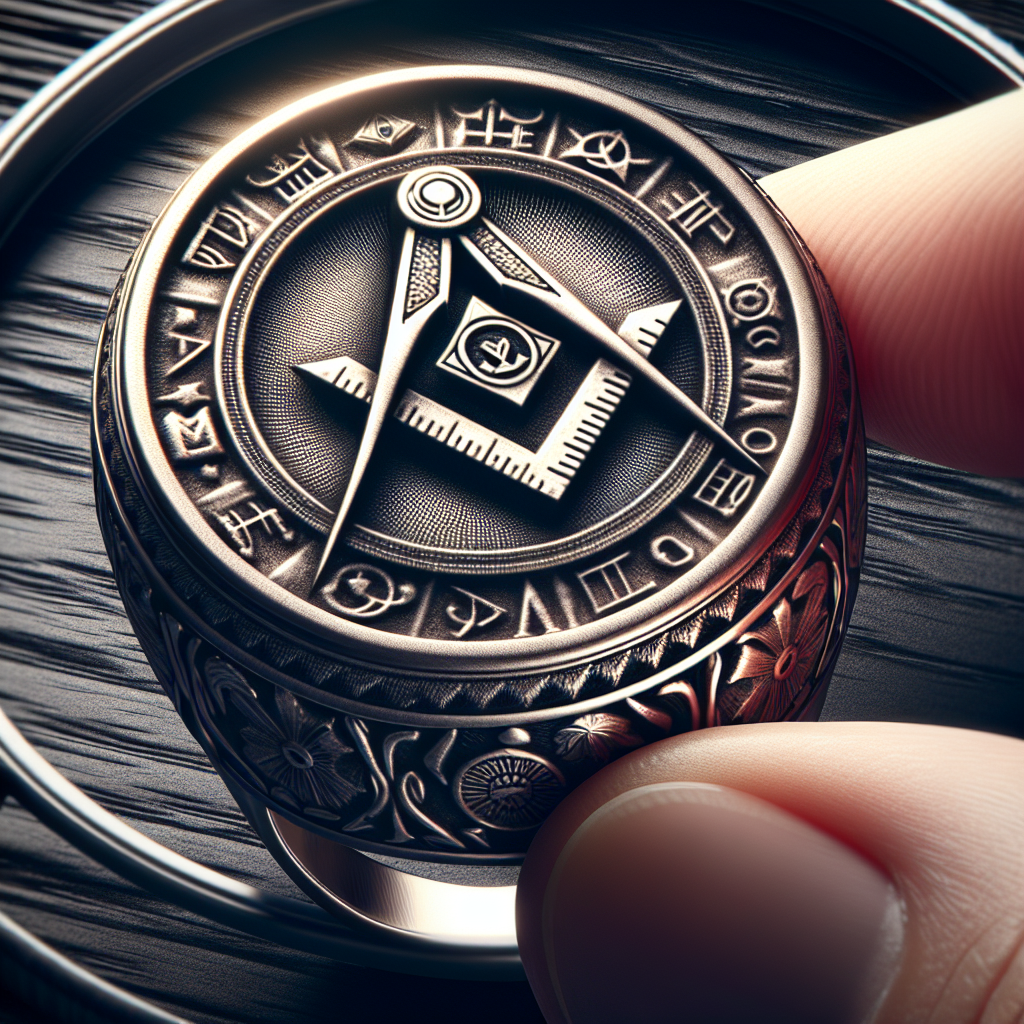
Embark on exploring the intriguing world of the Freemasonry through the symbolic significance of Masonic rings, a traditional way for freemasons to express their allegiance and pride towards their fraternity. These rings serve different purposes, from demonstrating commitment to the brotherhood, marking personal Masonic achievements, to symbolizing affiliation with various Masonic branches or degree levels. Crafted in precious metals such as gold, silver, and platinum, adorned with a myriad of stunning stones, these rings are not only a token of dedication but also a piece of art in their own right. By uncovering the deep symbolism and the fascinating history behind these rings, you can gracefully find the one that suits your path in Freemasonry.
Origins of Masonic Rings
Earliest known instances
Masonic rings trace their origins back to the medieval times, dating as far back as the 14th century, but their prominence began in the 18th century with the formalization of Freemasonry. In the early times, the rings were larger and more prominent, often being used as seals for letters and official documents.
Cultural influences
Freemasonry itself spread through Europe and later to America. Each of these regions and cultures had their influence on the designs and symbols used on the rings. In particular, symbols such as the All-Seeing Eye and the Square and Compasses were influenced by the spiritual beliefs, architectural practices, and philosophical concepts prevalent in various cultures.
Evolution over time
Over time, the design of Masonic rings has evolved in size, material, and engraving detail. While the rings were initially large, they gradually became more refined and subtle. The symbols have remained pertinent but have been redesigned according to the changing trends and preferences.
Symbols Engraved on Masonic Rings
Square and Compasses
The Square and Compasses is perhaps the most well-known symbol related to Freemasonry, and its presence on a Masonic ring makes it recognizable to others in the fraternity. The square represents morality while the compass serves to circumscribe our desires and keep our passions in check.
All-seeing Eye
The All-Seeing Eye or Eye of Providence, is another engraving you might see on Masonic rings. It symbolizes the divine watchfulness of the Supreme Being over our actions and should serve as a constant reminder of being righteous and moral.
Pillars and the Arch
The two pillars symbolize the porch of King Solomon’s Temple, a major architectural reference in Masonic rituals. The addition of an arch in designs represents the Royal Arch Degree, a significant milestone in a Mason’s journey.
Sun and moon
The sun and moon symbolize the universality and eternity of the Masonic principles. They also represent the constant presence of light and wisdom in the Masonic fraternity, irrespective of the time of the day.

Materials Used in Masonic Rings
Use of precious metals
Masonic rings are commonly made from precious metals such as gold, silver, and sometimes platinum. The use of such valuable materials signifies the importance and value placed on the masonic ideals represented by the ring.
Significance of precious stones
Precious stones are also often used in Masonic rings, each with its own unique symbolism. These can range from diamonds, symbolizing indestructibility and purity, to sapphires, which symbolize wisdom and learning.
Durability and craftsmanship
A Masonic ring deserves to be manufactured with great care and skill. It is made to withstand wear and tear, reflecting the durability and longevity of the fraternity itself.
Purpose of Masonic Rings
Expression of fraternity pride
Masonic rings can be seen as an expression of pride in one’s association with the fraternal organization. They serve as a testament to a Mason’s commitment and devotion to the principles of Freemasonry.
Sign of devotion to the brotherhood
The rings can also be seen as a sign of devotion to the brotherhood, reflecting the commitment and dedication a Mason has to the fraternity.
Representation of Masonic accomplishments
A Masonic ring can also symbolize a Mason’s progress within the fraternity. Different rings or symbols may represent different degrees or accomplishments within Freemasonry.
Symbolism of Masonic degree levels
The different designs and symbols on a Masonic ring can also represent different Masonic degrees. For example, a ring with a compass pointed upwards may denote a Master Mason.

Masonic Rings as Insignia for Branches
Scottish Rite
The Scottish Rite rings often have the double-headed eagle, symbolizing the dual sovereignty of the spiritual and secular life. The number 32 or 33 often accompanies the eagle, denoting the degree conferred on the Mason.
York Rite
York Rite rings display different symbols including the Triple Tau, signifying the Holy Royal Arch Degree. The cross within a crown represents the Order of Knights Templar, the highest degree in the York Rite system.
Shriners
Shriners’ rings, an affiliated organization, are distinct and feature the scimitar, a crescent, and a star, paying homage to their Arabian theme.
Order of the Eastern Star
Order of the Eastern Star rings feature the inverted pentagram, each point containing different allegorical figures. These symbols mainly represent biblical heroines and their virtues.
Choosing the Right Masonic Ring
Affordability
While some Masonic rings made of precious metals and gems can be costly, there are plenty of affordable options made of less expensive metals and synthetic stones. It’s critical to choose a ring within your budget.
Design and Detailing
The design and detailing of a ring should reflect the Mason’s personal style and taste. The intricate makers of these rings often offer a wide variety of options to choose from.
Symbolism
The symbols on a Mason’s ring should accurately reflect your membership and rank within the Masonic order, so it’s essential to understand the different symbols and their meanings.
Comfort
As the ring will likely be worn regularly, comfort is a key factor. Make sure to choose a ring that fits well and suits the shape of your hand.
The Ritual and Ceremony of Receiving a Masonic Ring
Historical context
Historically, the ritualistic bestowal of a Masonic ring upon a new member signified their official acceptance into the society and commitment to uphold Masonic principles.
Modern practices
Today, the ring is often given during the Master Mason degree ceremony. It may be presented by the Lodge, a family member or a mentor, signaling the Mason’s transition into a fully fledged member of the fraternity.
Symbolic meaning of the ceremony
The ceremony and the receiving of the ring is a symbolic representation of the Mason’s journey, linking him to the brotherhood across the ages.
How Masonic Rings are Worn
Preferred fingers to wear Masonic Ring
While there is no strict rule about which finger the Masonic ring must be worn, it is most commonly worn on the third finger or “ring finger” of the right hand.
Cultural variations
Different cultures may have varied traditions and customs regarding the wearing of rings. Masons are advised to follow what feels right according to their particular cultural practices.
Influence of personal choice and comfort
Personal comfort and choice are significant aspects to consider when deciding how to wear a Masonic ring. Comfort should never be compromised, as the ring serves a daily reminder of your commitment to the fraternity.

Controversies Surrounding Masonic Rings
Misconceptions and stereotypes about Freemasonry
Freemasonry is often misunderstood and stereotyped, which can lead to misconceptions about the rings. Some people may see Freemason rings as a sign of a secret society with illicit activities, which is far from the truth.
Iconography and symbolism disputes
Sometimes the symbols used on the rings can cause disputes, particularly those taken from other cultures or religions. Often, these disputes arise from misunderstandings about Freemasonry’s use and interpretation of these symbols.
Public view and Masonic secrecy
The degree of secrecy maintained in Masonic practices can sometimes generate suspicion, controversy, or misconceptions, which can be directed towards the visible symbol of membership – the Masonic ring.
Impact of Masonic Rings on Popular Culture
Depictions in film and television
Masonic rings have been depicted in numerous films and television shows, often as a key plot device or a symbol of power, mystery, or intrigue.
Use in literature
In literature, authors have frequently used Masonic rings to signify a character’s membership in the fraternity, alluding to themes of brotherhood, morality, and knowledge.
Influence on jewelry trends
Over time, Masonic rings have also influenced jewelry trends non-Masonic related. Their remarkable designs, unique symbols, and the air of mystery they evoke have been appropriated into mainstream fashion. Thus, despite the controversies and mysteries surrounding them, Masonic rings continue to be a significant part of our cultural history.













